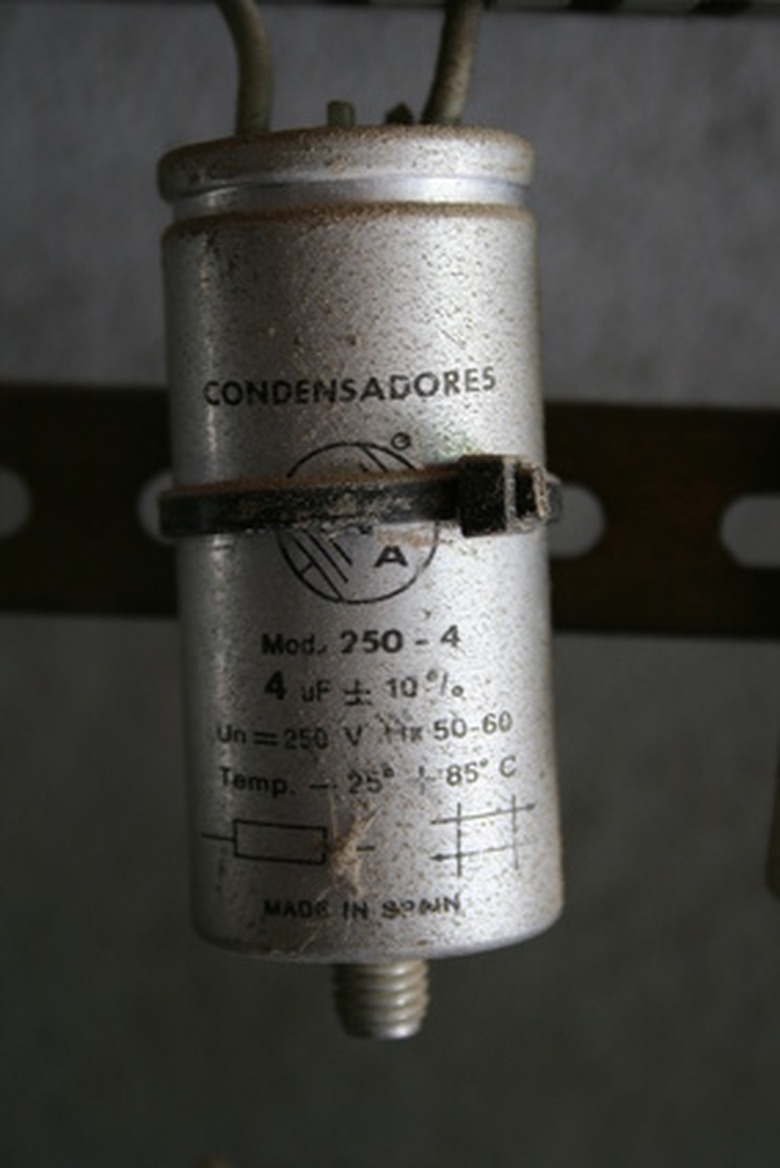What Is An AC Motor Capacitor?
In the 1880s, Nikola Tesla developed a series of alternating current (AC) electric motors. They relied on polyphase power–that is, two or three AC electric feeds in sync with each other, with one feed designed to reach its maximum before the others. Polyphase power produces a rotating magnetic field which drives the motor. Today, our homes have single-phase AC power. To make the AC motors in your appliances work, engineers added capacitors to create an extra phase.
Polyphase AC
Polyphase AC
The generators at the electric utility's power plants make electricity in three distinct phases. Each has a 60-cycle alternating current, but the cycles of each phase begin and end in an overlapping pattern. The greater power demands of commercial and industrial equipment call for the use of electrical wiring with all three phases.
Household AC
Household AC
Most homes have one- or two-phase electric power, as it's less expensive than three-phase wiring. You can do most normal things with any one of the three original phases, such as run a vacuum cleaner, a toaster or a computer. Most outlets in your home have only one phase, measuring 110 volts. A 220-volt outlet will have two phases.
AC Motor
AC Motor
An AC electric motor has an inner rotor surrounded by a set of coils. A three-phase AC motor runs different sets of coils. One phase may be approaching a maximum in its cycle, the next is at the maximum, the next is decreasing from the maximum. Only one set of coils at a time makes a maximum-strength magnetic field. As each phase goes through its cycles, the maximum magnetic point rotates around the motor's circumference, driving the rotor.
Starter Capacitor
Starter Capacitor
With single-phase power, all of a motor's coils begin their cycle at the same time. The magnetic field doesn't rotate, so the rotor can't move. Engineers worked around this by using a separate starter coil in series with a capacitor. A capacitor is a small cylinder-shaped electronic device that stores and releases electric charge. Its capacity is measured in units called farads, with starter capacitors typically having around 10 microfarads (millionths of a farad). Combined with the coil, the capacitor creates a second phase that leads the first by 90 degrees. This is enough to create a rotating magnetic field and start the motor. Once the motor comes up to speed, a centrifugal switch disconnects the starter coil and capacitor, otherwise, they would interfere with the motor's efficiency.
Start-Run Capacitors
Start-Run Capacitors
A variation of the starter capacitor scheme uses two capacitors: a large one to start the motor, and a smaller one to keep it running. This improves the performance of larger electric motors.
Cite This Article
MLA
Papiewski, John. "What Is An AC Motor Capacitor?" sciencing.com, https://www.sciencing.com/ac-motor-capacitor-6521227/. 24 April 2017.
APA
Papiewski, John. (2017, April 24). What Is An AC Motor Capacitor?. sciencing.com. Retrieved from https://www.sciencing.com/ac-motor-capacitor-6521227/
Chicago
Papiewski, John. What Is An AC Motor Capacitor? last modified March 24, 2022. https://www.sciencing.com/ac-motor-capacitor-6521227/
